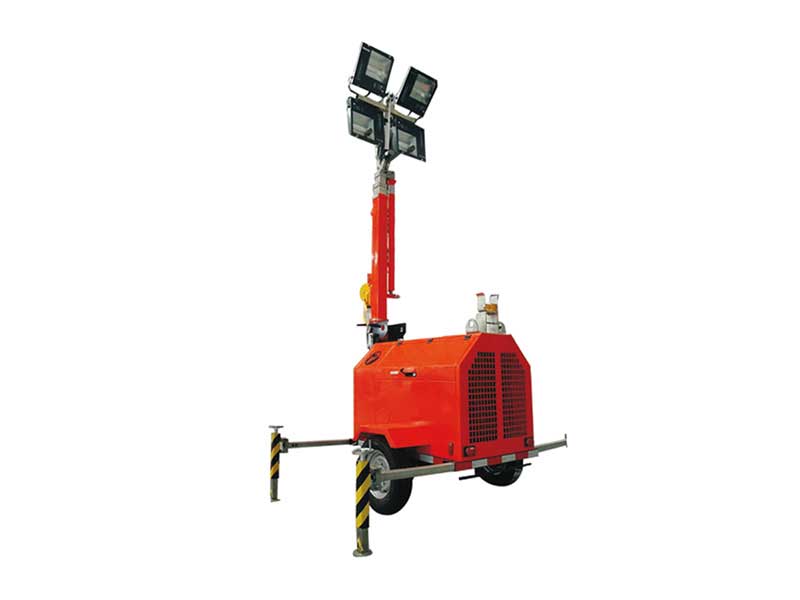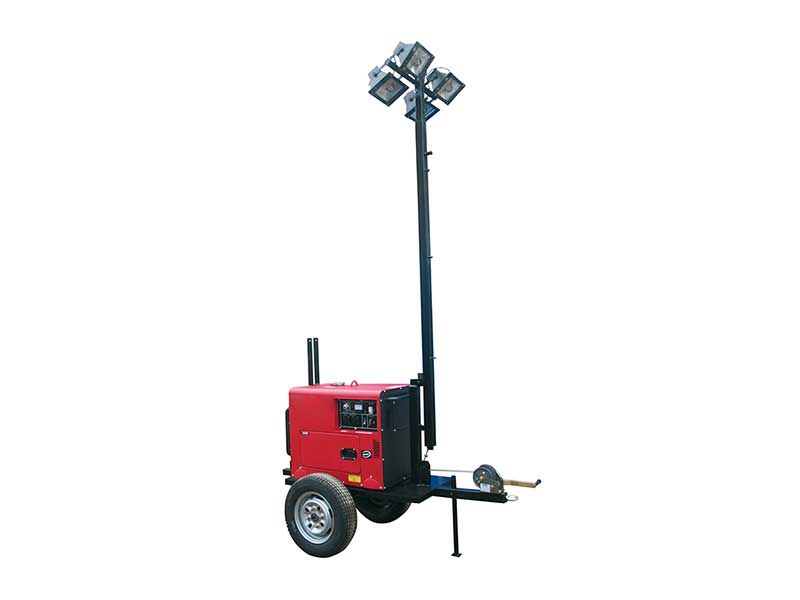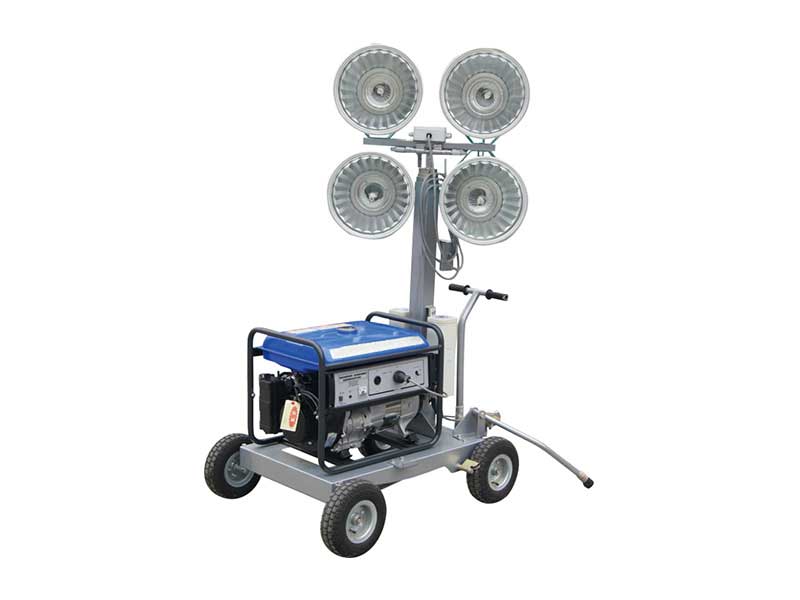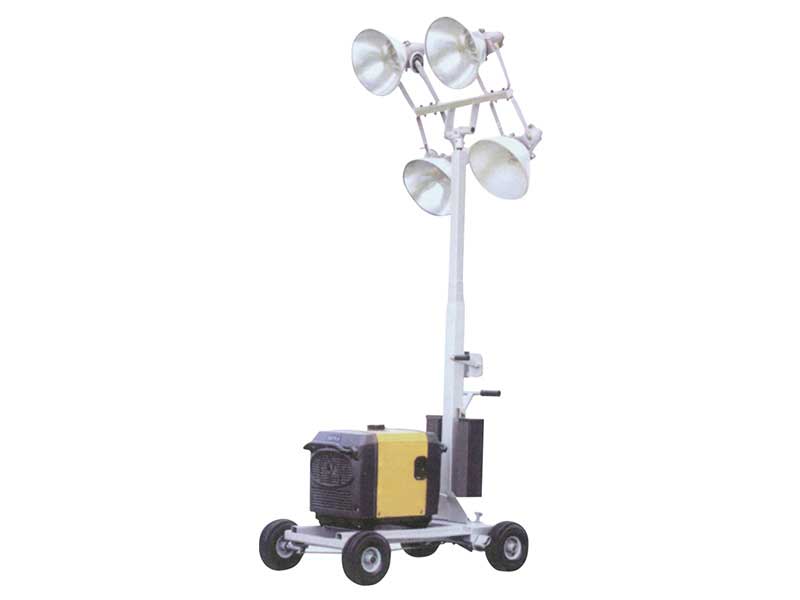HLT1400A Vertical Mast Light Towers With Max 11m Frame Extension
Continuous Working Hours(HR)
12
Lamp Output
1000Wx4
Lamp Frame Extension(m)
3.5-11m
HLT1000A Vertical Mast Light Towers With 5.5m Frame Extension
Continuous Working Hours(HR)
13
Lamp Output
150-400Wx4
Lamp Frame Extension(m)
2.3-5.5m
HLT400B Wide Body Vertical Mast Light Towers
Continuous Working Hours(HR)
13
Lamp Output
150-1000Wx4
Lamp Frame Extension(m)
2.3-4.8
HLT400A Wide Body Vertical Mast Light Towers
Continuous Working Hours(HR)
7
Lamp Output
150-400Wx4
Lamp Frame Extension(m)
2.1-4.8
What are Light Towers?
Light towers are versatile lighting solutions, comprising multiple electric lamps affixed atop a mast. Strategically placed, these towers illuminate specific areas. The mast connects to a base resembling a trailer, providing stability and facilitating transport between locations.
Historically, before the advent of electricity, prominent light towers were the iconic lighthouses on global coastlines. These towering structures, centuries old, initially used fire for illumination, later transitioning to electric lighting. Many historic lighthouses remain functional today.
In the late 19th century, American cities, amidst the rise of commercial electricity, sought cost-effective street lighting solutions. They erected towering structures, dubbed “moon towers,” with powerful lights atop, emulating a lunar glow over towns.
Advancements in the internal combustion engine in the 20th century led to the evolution of light towers into portable versions, now indispensable in modern work sites.
Diverse Aspects of Portable Light Towers
Portable light towers are known for their mobility and self-generated electricity, crucial in areas lacking power sources. Their ease of deployment and disassembly is a notable feature.
Contrasting with stationary lighting options such as street lamps, portable light towers demand more frequent upkeep. Typically powered by diesel engines, these towers necessitate regular refueling and engine care. For ongoing applications, stationary lighting solutions might offer more efficiency than portable light towers.
Transporting Light Towers
The design of portable light towers varies, predominantly as trailers with durable tires for ease of towing. Another variant includes cart-style towers, which allow manual movement without vehicular support.
Most light towers are trailer-based, featuring a hitch for attachment and wheels for road transport. Tire maintenance is key to ensuring road safety.
Cart-style light towers, being more compact and lighter, provide the advantage of easy manual movement around job sites, independent of vehicles.
What is the type of Light Towers?
Light towers vary based on their power source and base design, including:
Internal combustion engine-powered types: standard duty, heavy duty, and industrial models.
Battery-powered towers.
Solar-powered units with battery storage for solar energy.
Portable lighting carts with compact generators and shorter masts for easy mobility.
The base, whether trailer-like or cart-like, houses a battery array or an engine fueled by diesel, gasoline, natural gas, or propane. Generators ensure regulated voltage for the lights, drawing power from engines or batteries. Some battery-powered models incorporate solar panels for additional energy storage.
Selecting a light tower involves considering:
- Mobility: Options range from trailer-based models for towing to more compact, manually movable types.
- Power Generation: Light towers generally come with diesel generators, their output measured in kilowatts, suitable for powering on-site equipment.
- Illumination Options: The choice between metal halide and LED lamps affects both cost and brightness.
- Mast Dimensions: The mast height, in tandem with lamp intensity, dictates the scope of light coverage. Higher masts enable broader illumination.
Characteristics of Light Towers
Key features of light towers include mast height and light intensity, determining the illumination area and intensity. Power sources influence operational duration before needing refueling or recharging. Options like solar panels can extend usage.
Mast manipulation varies, with options like collapsible poles or inflatable masts. Light tower sizes affect portability, with larger units featuring trailer chassis and smaller ones having integrated carts for manual movement.
Applications
Light towers are crucial in numerous settings:
- Road and railroad construction.
- Wind tower and tunnel works.
- Military operations at forward operating bases.
- Major sporting events and transportation projects requiring evening work.
Specifications
Light tower specifications cover:
- Fuel type and capacity for engine-powered models.
- Engine horsepower and noise output.
- Battery storage capacity and operating efficiency.
- Emission ratings.
Physical dimensions, weight, mast height, number of lights, and bulb technology (halogen, metal halide, incandescent, fluorescent, LED).
Materials of Light Towers
Light towers are made of various materials:
- Highway-rated rubber tires or hard rubber and plastic tires for portables.
- Steel, aluminum, and other metals for the base.
- Durable metals or metal-plastic combinations for housing engines, generators, or batteries.
- Metal poles or inflatable masts.
- Metal, plastic, and fiberglass in lighting arrays.
Selecting the right light tower involves considering area size, mast height, wattage, operational and maintenance costs, and overall durability. For indoor or smaller projects, compact models are ideal, while larger, more robust units suit industrial and public lighting needs.
Upkeep of Portable Light Towers
Maintenance focuses on:
Lamps: Metal halide lamps, requiring replacement after approximately 10,000 hours, need cooling before handling. In contrast, LED lamps, with longer lifespans, require full unit replacement upon failure.
Engine Care: Routine checks and maintenance of the diesel engine are vital, including monitoring fluid levels, filter changes, and belt inspections.
Tire Upkeep: Regular tire checks are crucial for maintaining the tower’s transportability, focusing on wear signs and proper inflation.
Maximizing Light Tower Utility
Effective utilization involves strategic placement for optimal light coverage, adhering to maintenance schedules, and following best operational practices. Stability on uneven surfaces and having spare parts ready are also important.
Cost Range of Portable Light Towers
Prices vary, typically from $10,000 to $25,000, influenced by power output and features. Rental options are available at about $150 per day.
Conclusion
Portable light towers are essential for illumination in non-electrified areas. For parts and service, platforms like Horizont machinery offer a broad selection of OEM and aftermarket parts for various light tower brands, along with expert guidance for specific requirements.






